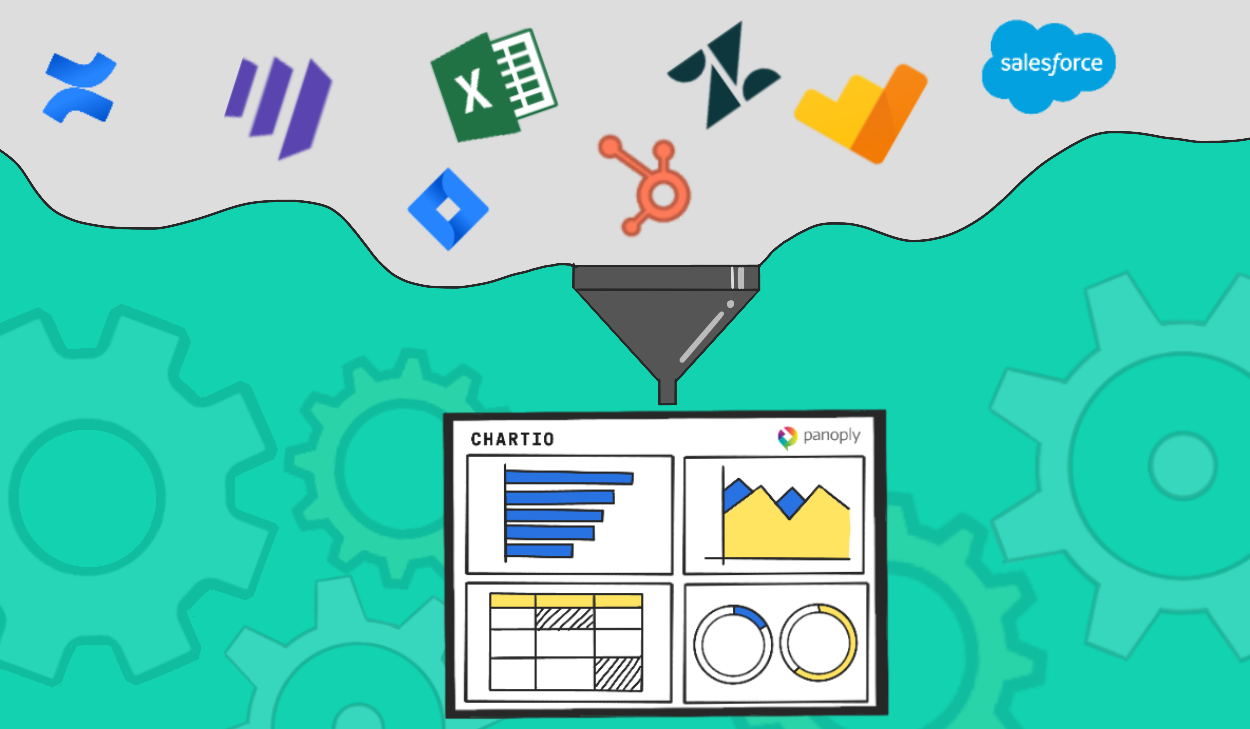Bridging the Knowledge Gap to Create Data-Driven Cultures
Posted by on August 27, 2020 Chartio
This is a guest post by Carlos González de Villaumbrosia, CEO & Founder of Product School, a global leader in Product Management training with a community of over one million product professionals.
People who are into data, and work with it daily, understand its importance. They know how to look at a mess of numbers and percentage points and make it make sense. These data leaders, usually Product Managers, Data Scientists, and Data Engineers, are the people who have all the answers, can back up their claims, and provide vital insights to the rest of their team.
But as we move forward in 2020, we know that having just a handful of data leaders on a team is just not enough. To build great customer-centric products and provide services that solve real problems, every point of a business must be driven by data. That means that everyone in every team needs access to, and at least a basic understanding of, data.
In the 21st century, most businesses have at least some form of data analysis process. Even if it’s just management going over Google Analytics each quarter to set OKRs, or social media managers looking at vanity metrics to see how their Facebook ads performed. No business nowadays exists without some kind of data. But what we still seem to be lacking are businesses who fully adopt data into every part of the development process. It’s time for data to be democratized.
Why Isn’t Data Democratized?
Before we can dive into how data-driven cultures are built, and how to bridge the knowledge gap between team members, it’s important to understand some of the hurdles businesses face.
In theory, data democratization sounds like a great idea, but there are some perceived barriers that stop businesses in investing the time into bridging their employee’s knowledge gap on data.
-
“Not everyone needs it.”
This misconception comes from imagining that just because you give each employee access to all data, that they’ll get bogged down looking at things that don’t matter. That isn’t the case. Everyone has data that they care about, and nobody wants to spend time digging through spreadsheets that don’t mean anything to them. Once people know what they’re looking for, and where to find it, they’ll get the insights they need and then leave the rest of your precious data alone. -
“Not everyone understands it.”
This perceived problem is that just because people haven’t been given accessible data, they wouldn’t know what to do with it. While the knowledge gap in data is real, just because people don’t understand your data processes, doesn’t mean they can’t. The answer here is education, which we’ll get into later. -
“Too many eyes on the data will lead to conflicting insights.”
It’s understandable. It sounds easier to keep data analytics in the hands of the few, who then turn that data into information to be passed around the rest of the company. Maybe that worked in the olden days of business, but not anymore. Instead of imagining chaos, imagine disruption and innovation. You’ve not hired a team of dunces, so you should be able to trust people with your data, and you never know who might connect the dots that lead to your next big feature or solve your next problem!
How to Bridge the Knowledge Gap
Data democratization is absolutely key for empowering all employees, and helps to build a data-driven culture within organizations. This is the only thing that makes data at every point of development possible.
To do that, you need to bridge the knowledge gap. Not every employee will understand data and how to use it, especially if you didn’t hire them with a prerequisite that they use analysis in their daily work. In that case, it is your responsibility to educate them and foster great partnerships between data leaders and the rest of the team. You can achieve this using a 3-pronged approach:
1. Choose the right tools, and offer training
Choosing a data analytics platform or business intelligence software which gives your data experts the full range of tools sounds like an easy win. But you also need to consider those employees who have never touched such a platform before. The most powerful tools are sometimes not the most user friendly. It’s all very well having access to a platform with all the bells and whistles, which only the experts know how to use, but this leaves the rest of your teams at a loss.
Powerful tools and user friendly tools are not mutually exclusive. Choose a tool which is powerful enough to get the job done, and intuitive enough for non-experts to wield. You can also check with your tool provider if they offer training. For example, Chartio offers free eBooks on data with their initiative The Data School, and has a huge library of tutorials.
Give your teammates the time and resources to educate themselves on data, offering your support wherever possible, and you may be amazed at how well they take to it. After all, people don’t get into tech because they hate learning new things! If you have a discretionary budget for employee training, encourage your teams to use it to improve their data skills.
2. Use smart data visualization
Creating dashboards and other data visualizations will help to make your information more accessible. Work with the data leaders within your organization to create simple dashboards that cut through the excess and deliver the data that matters to individual teams. Set up a meeting with different team members, and ask them what data they think would be helpful. Also tell them what data sources you think will be the most helpful to them, where to find it, and how to visualize it. Empower them to go through the process on their own.
For example, your customer success team will have specific questions like “how can we see at which point in the funnel people are dropping off?” In that case, you can co-create a dashboard showing them exactly that.
In the future when they need to access the same kind of information, they’ll be capable of replicating the process for themselves. This frees up the Product Management teams time, and the Data Scientist’s time as well.
3.Keep communication about data open
A huge part of the democratization of data is transparency. You never know who in your organization is going to be able to connect the most seemingly unrelated dots, and come up with game-changing insights for your business. There may be a link between two corners of your company that you never would have imagined, without one employee playing around with analytics.
If you don’t encourage people to ask questions and learn from each other, that creates a tense working environment. You may find that making sure there are no stupid questions when it comes to data, means you’ll be able to foster stronger cross-functional relationships, which is only going to help product development run more smoothly.
Encourage experimentation, rather than punishing failure. No great things were ever accomplished by people who were held back from trying new things.
Get your data leaders involved. You could host in-house workshops led by those who use data analysis every day, or try exercises like Data Draw Up. Not only would this be a step in bridging the knowledge gap, it’s also a step in strengthening the relationship between your data experts and your non-experts. Once you’ve opened the doors for collaborative learning among your teams, they’ll feel more comfortable asking each other questions. Strong teams = stronger products.
The moral of the story
The number one key to success in data democratization and bridging the knowledge gap is to prioritize people over processes. If the tools you’ve been using to gather, process, and visualize data are old and cumbersome to learn, don’t just stick with them because ‘it’s always been done that way.’ Just because other companies use that platform doesn’t necessarily mean it’s the right one for you.
Choose your tools and your processes based on the people who will be using them, and when it comes to data that means everyone. You don’t have to be the CEO, a Data Scientist, or a Product Data Manager to have data mean something to you.
It’s a long-term investment, but having empowered teams with access to data will only strengthen the value of your product.

Carlos González de Villaumbrosia has over 10 years of experience building teams and digital products in the US, Europe, and Latin America. Carlos founded Product School in San Francisco in 2014. Today, the company is the global leader in product management training with 20 campuses worldwide and a live online campus.
Designed to fit into work schedules, classes are held in the evenings or on weekends. All the instructors are real-world product managers, working at renowned tech companies like Netflix, Airbnb, Google, Facebook, Amazon, and Paypal.
In addition to individual classes, Product School also delivers custom corporate training programs to Fortune 500 companies seeking to upskill their existing teams or onboard new talent.
Carlos is committed to pushing the product community forward. With this aim in mind, he published the Amazon bestseller, The Product Book. He also hosts Proddys - the annual awards honoring the best software products -, produces ProductCon - a multi-city conference attended by tens of thousands of product managers every year - and helps organize over 1,000 free events every year in 200 cities around the globe.


